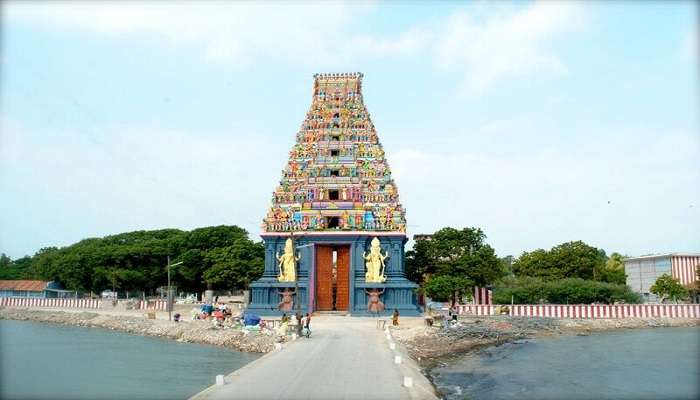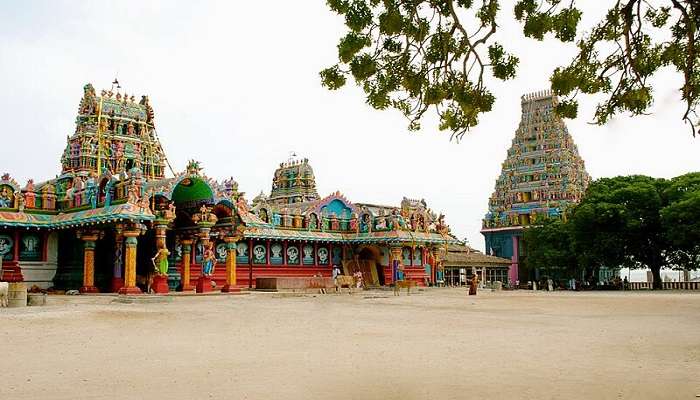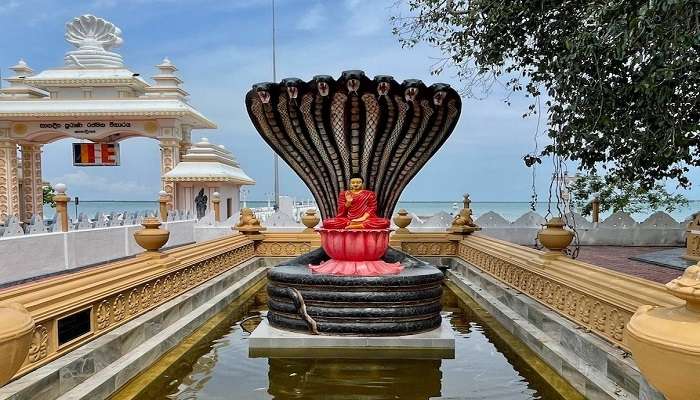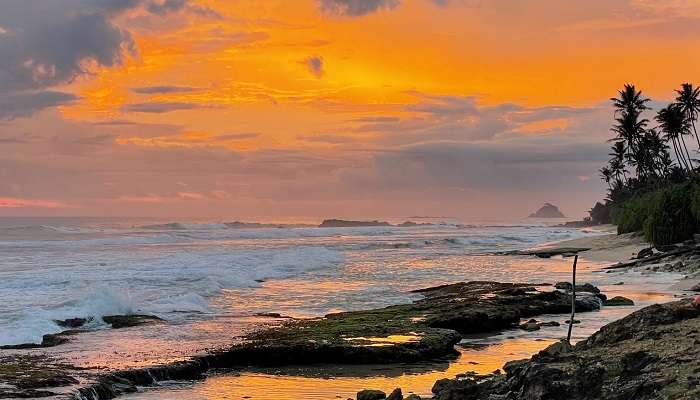Visit Nainativu Island To Explore Rich Heritage Of Sri Lanka In 2026

Nainativu Island, located off the coast of the Jaffna Peninsula in the Northern Province of Sri Lanka, holds a significant place in religious and cultural realms. This small coastal island is filled with plenty of enticing activities and sites, along with the deep-rooted historical significance of Nainativu Island, which is also associated with ancient Tamil Sangam literature, Mahavamsa, and Ptolemy’s map. The island is also home to the famous Nagapooshani Amman Temple, a revered Hindu shrine that attracts pilgrims from across the region. Along with the island’s serene beaches and traditional fishing communities, this beautiful place offers a glimpse into Jaffna’s tranquil yet vibrant local way of life.
Geography And Location

Nainativu Island is off the coast of the Jaffna Peninsula in the Northern Province of Sri Lanka. It holds a special place in the region due to its geography and location: Nainativu Island is positioned around 25 kilometres west of the Jaffna Peninsula, making it easily reachable from this major city.
Surrounded by the waters of the Palk Strait, Nainativu spans an area of about 1.25 square kilometres, and the island is a part of the Mannar District, which falls under the administrative control of Sri Lanka. Its location within the Northern Province of Sri Lanka adds to its cultural and historical importance, as this area has been the centre of Tamil heritage for many years. The closeness of Nainativu Island to the Jaffna Peninsula and its location within the Northern Province also make it a significant pilgrimage destination for Buddhists and Hindus. This exceptional geographical setup adds to its appeal as a Land of Pilgrimage, drawing devotees from all over.
Also Read: Beaches Around Jaffna
Historical Significance And Preservation

The mention of Nainativu in Tamil Sangam literature gives us a glimpse of the island’s early links to Tamil heritage, while references in texts like Mahavamsa and Ptolemy’s map establish its historical significance on a larger scale. These accounts prove that Nainativu Island has always existed and has shaped the culture.
The island’s historical sites are being carefully preserved to retain their architectural grandeur and cultural significance. Restoration projects help protect ancient temples, monuments, and artefacts for future generations.
Historical And Sacred Places

The Nagadeepa Purana Viharaya is an ancient Buddhist temple and one of Sri Lanka’s sixteen holiest Buddhist sites. This ancient temple complex is believed to have been visited by Lord Buddha during one of his visits to Sri Lanka. As a result, it stands as a powerful symbol of faith and devotion, offering a tranquil sanctuary for worshippers seeking blessings and enlightenment, particularly during the annual Poson festival.
Nagapooshani Amman Temple is a significant Hindu temple dedicated to the goddess Parvati, also known locally as Nagapooshani Amman. The temple is an architectural marvel featuring intricate carvings and vibrant colours. It draws thousands of devotees, especially during the annual Navaratri festival. Nagadeepa Rajamaha Viharaya is another crucial Buddhist temple tied to the Buddha’s visit to the island. The temple is serene and provides insight into the island’s Buddhist heritage.
Related Post: Places To Visit In Sri Lanka In 2 Days
Cultural Significance and Myths

Nainativu Island is culturally significant. The Sri Nagapooshani Amman Kovil is a prominent Hindu temple that is highly important to devotees. Hindu pilgrims come to seek blessings and spiritual fulfilment. The coexistence of Buddhism and Hinduism further enhances the island’s cultural diversity.
The island of Nainativu is filled with captivating myths and legends from Buddhist and Hindu traditions. These stories reflect the island’s rich history and culture. One exciting aspect is its connection to the Naga, serpent-like beings from ancient folklore. These myths highlight the diverse beliefs and narratives that have shaped Nainativu Island’s cultural identity over time.
Activities Around Nature

The island’s coastline has peaceful and less-crowded beaches, making it an ideal choice for those who enjoy the sea. The beaches here are perfect for relaxing, taking leisurely walks, and having quiet picnics by the sea. The gentle waves and clear waters create a soothing atmosphere, inviting visitors to relax and take in the natural beauty.
Nainativu Island’s comparatively level topography, which provides unhindered views of the surrounding ocean, is one of the island’s most notable natural features. Nainativu Island also has several small, tranquil fishing villages. These villages offer a genuine taste of island life and a window into the customs of the surrounding communities. Also, as an ideal location for avian observation, birdwatchers can see both resident and migratory birds. The waters around Nainativu are also very rich in marine life. Snorkelling and diving can take you into the aquatic ecosystem, including colourful coral reefs and diverse aquatic species.
Accommodation: Jetwing Jaffna, The Thinnai, Jaffna Heritage Hotel & Villa
Rates: Start from $50 per night
You May Also Like To Read: Hotels In Jaffna
Nainativu Island, often called the Land of Pilgrimage, is a fascinating combination of spiritual devotion, ancient grandeur, and untouched natural beauty. As you think about the charm of this incredible place, imagine yourself going on a life-changing trip to this magical island. The island’s unique mix of spiritual devotion, historical importance, and stunning natural scenery provides a one-of-a-kind experience. As you explore its revered grounds, you’ll be completely immersed in a world where long-standing traditions and timeless legends come together with the unspoiled wonders of nature. Book your trip to Sri Lanka today!
For our editorial codes of conduct and copyright disclaimer, please click here.
Cover Image Credit: Wikinamaste for Wikimedia Commons
Frequently Asked Questions About Nainativu Island
What is the best time to visit Nainativu Island?
The best time to visit Nainativu Island is from November to April. The weather is dry and pleasant during these months, which is ideal for sightseeing and outdoor activities. The monsoon season, from May to October, can bring heavy rains and rough seas, making travel to and around the island more challenging.
How do I reach Nainativu Island?
Nainativu Island is accessible by ferry from the town of Kurikadduwan on the Jaffna Peninsula. To reach Kurikadduwan, you can take a bus or hire a taxi from Jaffna, about 35 kilometres away. The ferry ride from Kurikadduwan to Nainativu Island takes approximately 20 minutes. It offers scenic views of the surrounding waters.
What are the main attractions on Nainativu Island?
Nainativu Island is famous for its religious and cultural sites. The main attractions include the Nainativu Nagapooshani Amman Temple, a significant Hindu pilgrimage site, and the Nagadeepa Purana Vihara, a revered Buddhist temple. The island's serene beaches and scenic landscapes also provide a tranquil retreat for visitors looking to relax and enjoy nature.
Are there accommodations on Nainativu Island?
Accommodation options on Nainativu Island are limited. Visitors often choose to stay in Jaffna, which offers a range of hotels, guesthouses, and homestays to suit different budgets. From Jaffna, day trips to Nainativu Island are convenient and allow for a comfortable stay while exploring the island’s attractions.
What cultural practices should I be aware of on Nainativu Island?
Respect for local customs and traditions is important when visiting Nainativu Island. When entering temples, remove your shoes and wear modest clothing that covers your shoulders and knees. It is customary to make a small donation at temples and to be mindful of ongoing religious ceremonies. Engaging with locals respectfully and observing their practices will enhance your visit.
People Also Read:
Boche Island Kuruva Island Eden Island

With a passion for exploring and travelling to the roads long forgotten, experience the world through enthralling stories and adventures. Join me as I share my experiences at some of the world’s most popular tourist destinations and quench that pestering curiosity with something exciting!











